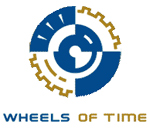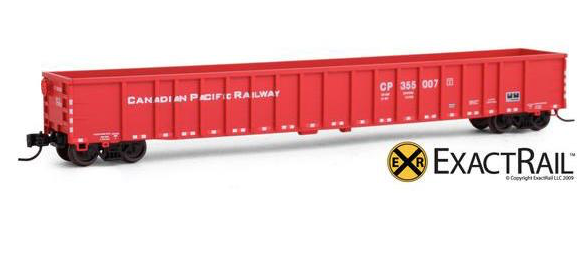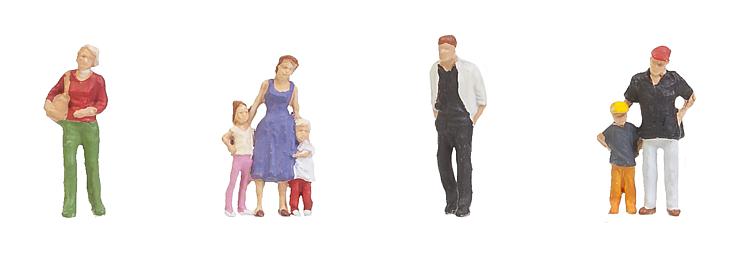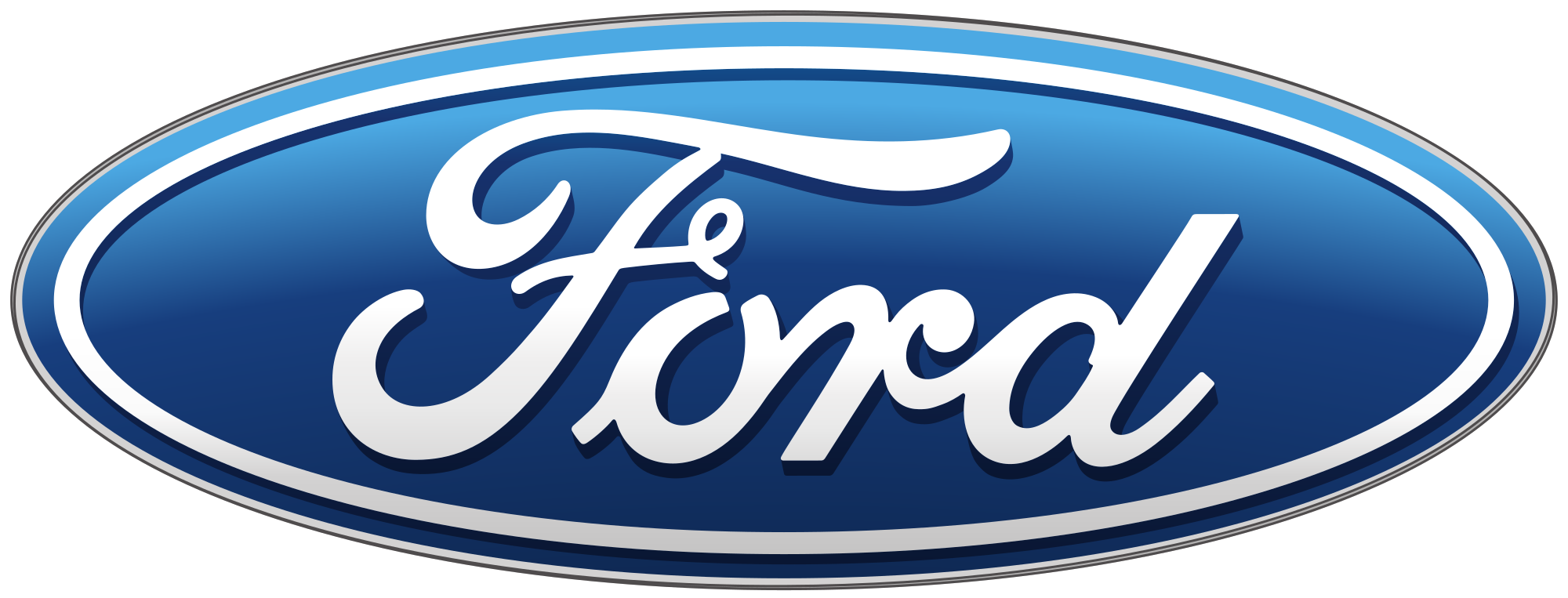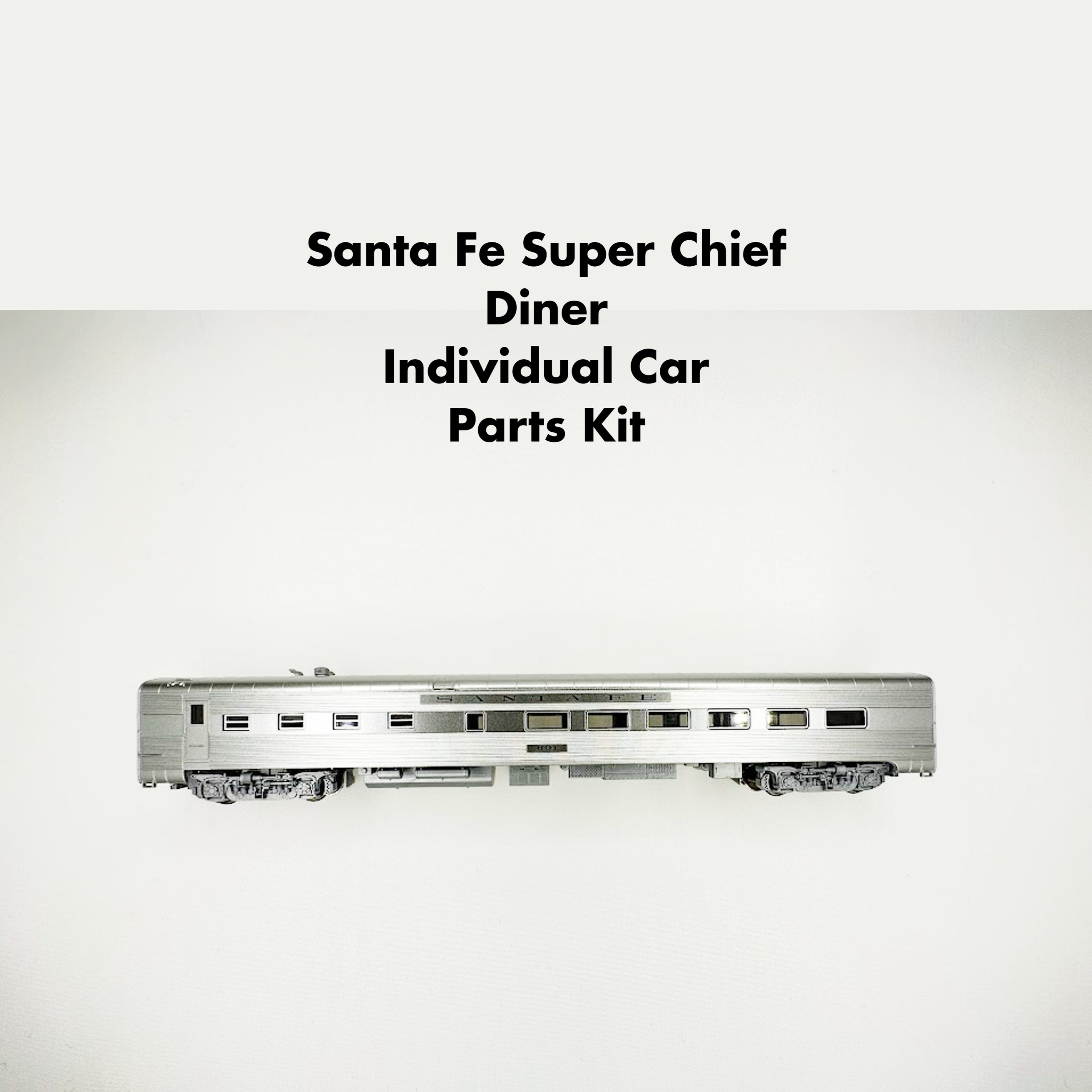Wheels of Time - 185TS - Passenger Car, Harriman, Express Baggage - Western Pacific - 505, 506
| Stock Number | 185TS |
| Original Retail Price | $85.99 |
| Brand | Wheels of Time |
| Manufacturer | Wheels of Time |
| Body Style | Wheels of Time Passenger Harriman Baggage Express 60 Foot |
| Prototype Vehicle | Passenger Car, Common Standard, 60' Baggage (Details) |
| Prototype | Passenger Car, Harriman, Express Baggage |
| Road or Company Name | Western Pacific (Details) |
| Reporting Marks | WP |
| Road or Reporting Number | 505, 506 |
| Paint Color(s) | Dark Olive Green |
| Print Color(s) | Yellow |
| Additional Markings/Slogan | Railway Express Agency |
| Coupler Type | MT Magne-Matic Knuckle |
| Coupler Mount | Body-Mount |
| Wheel Type | Injection Molded Plastic |
| Wheel Profile | Small Flange (Low Profile) |
| Multipack | Yes |
| Multipack Count | 2 |
| Announcement Date | 2010-01-15 |
| Release Date | 2010-09-01 |
| Item Category | Passenger Cars |
| Model Type | Heavyweight |
| Model Subtype | Harriman |
| Model Variety | 60 Foot Baggage Express |
| Prototype Region | North America |
| Prototype Era | NA Era II: Late Steam (1901 - 1938) |
| Years Produced | 1909-1940 |
| Scale | 1/160 |
Specific Item Information:
This model has arched roof with utility vents.
Western Pacific's seldom photographed arched roof baggage cars were Harriman-like in a lot of respects. Constructed in 1923 by the Press Steel Company, and numbered 121 to 140, they carried the all important L.C.L. express package business, company mail and baggage. They were equipped with Utility roof vents. Heavyweight baggage-express cars were used on trains such as the Royal Gorge from St. Louis to Oakland (a joint MP-Rio Grande-WP train) or the Exposition Flyer - inaugurated on 10, June 1939 to the Golden Gate International Exposition from Chicago Union Station (a joint CB&Q-Rio Grande-WP train). * Railroad had very similar cars, but not exact prototype.
Model Information:
These cars have several different door and roof options depending on which prototypes they are modeling.
Prototype History:
These cars were seen on railroads across North America. Harriman cars were developed during the time of Edward Henry Harriman, who controlled the Chicago & Alton Railroad, the Union Pacific, the Southern Pacific, the Illinois Central, the Central of Georgia, the Pacific Mail Steamship Company, Wells Fargo Express Company, and directed the development of the "Common Standard Specifications" among the Associated Lines. This set of specifications allowed parts to be shared across all Harriman-controlled railroads, allowing economical bid prices due to the sheer size of standardized orders, standardized part inventories and methods for car repair.
These cars were designed with the a distinctive arched roof and diamond underframe crossbearers. The Arched Roof construction handled rainy weather better than clerestoy design - once lighting and ventilation problems were solved. Non-Harriman Arched Roof cars, while similar, had fished-belly underframes developed by Pullman Mfg. Co. and copied by others. Some of these 60-ft cars remained in use until the advent of Amtrak while others became maintenance-of-way cars.
Read more on Wheels of Time website.
These cars were designed with the a distinctive arched roof and diamond underframe crossbearers. The Arched Roof construction handled rainy weather better than clerestoy design - once lighting and ventilation problems were solved. Non-Harriman Arched Roof cars, while similar, had fished-belly underframes developed by Pullman Mfg. Co. and copied by others. Some of these 60-ft cars remained in use until the advent of Amtrak while others became maintenance-of-way cars.
Read more on Wheels of Time website.
Road Name History:
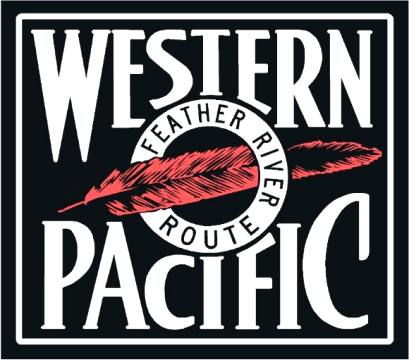 The Western Pacific Railroad (reporting mark WP) was a Class I railroad in the United States. It was formed in 1903 as an attempt to break the near-monopoly the Southern Pacific Railroad had on rail service into northern California. WP's Feather River Route directly competed with SP's portion of the Overland Route for rail traffic between Salt Lake City/Ogden, Utah and Oakland, California for nearly 80 years. In 1983 the Western Pacific was acquired by the Union Pacific Railroad. The Western Pacific was one of the original operators of the California Zephyr.
The Western Pacific Railroad (reporting mark WP) was a Class I railroad in the United States. It was formed in 1903 as an attempt to break the near-monopoly the Southern Pacific Railroad had on rail service into northern California. WP's Feather River Route directly competed with SP's portion of the Overland Route for rail traffic between Salt Lake City/Ogden, Utah and Oakland, California for nearly 80 years. In 1983 the Western Pacific was acquired by the Union Pacific Railroad. The Western Pacific was one of the original operators of the California Zephyr.
The original Western Pacific Railroad was established in 1865 to build the westernmost portion of the Transcontinental Railroad between San Jose, California (later Oakland, California), and Sacramento, California. This company was absorbed into the Central Pacific Railroad in 1870.
The second company to use the name Western Pacific Railroad was founded in 1903. Under the direction of George Jay Gould I, the Western Pacific was founded to provide a standard gauge track connection to the Pacific Coast for his aspiring Gould transcontinental system. The construction was financed by the Denver and Rio Grande Western Railroad, a company in the Gould system, which lost access to California due to the attempted acquisition of the Southern Pacific Railroad by the Rio Grande's main rival, the Union Pacific Railroad. The Western Pacific Railroad acquired the Alameda and San Joaquin Railroad and began construction on what would become the Feather River Route. In 1909 it became the last major railroad completed into California. It used 85-lb rail on untreated ties, with no tie plates except on curves over one degree; in 1935 more than half of the main line still had its original rail, most of it having carried 150 million gross tons.
The Western Pacific was acquired in 1983 by Union Pacific Corporation, which in 1996 would purchase its long-time rival, the Southern Pacific Railroad. In July 2005 Union Pacific unveiled a brand new EMD SD70ACe locomotive, Union Pacific 1983, painted as an homage to the Western Pacific.

The original Western Pacific Railroad was established in 1865 to build the westernmost portion of the Transcontinental Railroad between San Jose, California (later Oakland, California), and Sacramento, California. This company was absorbed into the Central Pacific Railroad in 1870.
The second company to use the name Western Pacific Railroad was founded in 1903. Under the direction of George Jay Gould I, the Western Pacific was founded to provide a standard gauge track connection to the Pacific Coast for his aspiring Gould transcontinental system. The construction was financed by the Denver and Rio Grande Western Railroad, a company in the Gould system, which lost access to California due to the attempted acquisition of the Southern Pacific Railroad by the Rio Grande's main rival, the Union Pacific Railroad. The Western Pacific Railroad acquired the Alameda and San Joaquin Railroad and began construction on what would become the Feather River Route. In 1909 it became the last major railroad completed into California. It used 85-lb rail on untreated ties, with no tie plates except on curves over one degree; in 1935 more than half of the main line still had its original rail, most of it having carried 150 million gross tons.
The Western Pacific was acquired in 1983 by Union Pacific Corporation, which in 1996 would purchase its long-time rival, the Southern Pacific Railroad. In July 2005 Union Pacific unveiled a brand new EMD SD70ACe locomotive, Union Pacific 1983, painted as an homage to the Western Pacific.
Brand/Importer Information:
Wheels of Time was founded by Matthew Young in the fall of 1995. From an early age, Matthew has had a passion for trains, both in full-size and in miniature. His family frequently went out of their way so he could ride the train, or simply watch the action on the tracks. "On one occasion mom took us to San Francisco along the waterfront. Spotting a State Belt ALCo S-2 locomotive switching the wharves, I persuading my mom to follow it. I watched in wonder as I saw and heard the hit-cup sputtering of the ALCo engine as it revved-up to move railroad cars on and off the car float at Pier 43." Other early family experiences included watching Southern Pacific freight and Amtrak's San Joaquin Amfleet trains roll by as his family waited to be seated at Spenger's in Berkeley, which sat happily right next to the tracks. "My brother and I would shoot pictures of the trains with our Instantmatic 110 cameras, sometimes only getting the wheels or worse yet ... getting a real good close up of my big thumb."
Matthew and his brother built models of all kinds, but their model train career began in elementary school when they started making 3-D cardboard miniature trains from pictures found in the pages of Trains Magazine and Model Railroader Magazine. On a visit, many years later, with the late Richard Buike of Trackside Trains in Burlingame, California, the conversation turned to the lack of N-Scale passenger trains and how the few that existed didn't look right. "I told him right then and there that I was going to produce high quality, historically accurate passenger railroad cars. Even I was a little surprised when I said this." The first product was a 1950 Pullman-Standard "10-6" sleeping car made of brass. Wheels of Time became one of the first makers of historically accurate and realisticly detailed passenger train cars. At Wheels of Time, we research original equipment and recreate it with CAD software for production. We're lovers of history and sticklers for detail. On our line of Transit Motor Coaches (a fancy way of saying "buses"), even the destination *roll* signs are historically accurate. Be sure to check out all our beautiful and accurate products. We hope you'll come to share our passion for trains, here recreated in miniature. At Wheels of Time, you get to take home a piece of a fascinating history.
Wheels of Time manufactures historically accurate model trains, vehicles, and model railroad accessories with a real *wow* factor. Our obsession with detail and historical accuracy is reflected in our exceptional design and production: hold a Wheels of Time model in your hand and you'll be tempted to say, 'It's the real thing!'
Matthew and his brother built models of all kinds, but their model train career began in elementary school when they started making 3-D cardboard miniature trains from pictures found in the pages of Trains Magazine and Model Railroader Magazine. On a visit, many years later, with the late Richard Buike of Trackside Trains in Burlingame, California, the conversation turned to the lack of N-Scale passenger trains and how the few that existed didn't look right. "I told him right then and there that I was going to produce high quality, historically accurate passenger railroad cars. Even I was a little surprised when I said this." The first product was a 1950 Pullman-Standard "10-6" sleeping car made of brass. Wheels of Time became one of the first makers of historically accurate and realisticly detailed passenger train cars. At Wheels of Time, we research original equipment and recreate it with CAD software for production. We're lovers of history and sticklers for detail. On our line of Transit Motor Coaches (a fancy way of saying "buses"), even the destination *roll* signs are historically accurate. Be sure to check out all our beautiful and accurate products. We hope you'll come to share our passion for trains, here recreated in miniature. At Wheels of Time, you get to take home a piece of a fascinating history.
Wheels of Time manufactures historically accurate model trains, vehicles, and model railroad accessories with a real *wow* factor. Our obsession with detail and historical accuracy is reflected in our exceptional design and production: hold a Wheels of Time model in your hand and you'll be tempted to say, 'It's the real thing!'
Item created by: nscalestation
on 2016-12-18 01:26:05
Last edited by: Alain LM on 2020-11-01 10:24:11
If you see errors or missing data in this entry, please feel free to log in and edit it. Anyone with a Gmail account can log in instantly.
Last edited by: Alain LM on 2020-11-01 10:24:11
If you see errors or missing data in this entry, please feel free to log in and edit it. Anyone with a Gmail account can log in instantly.



